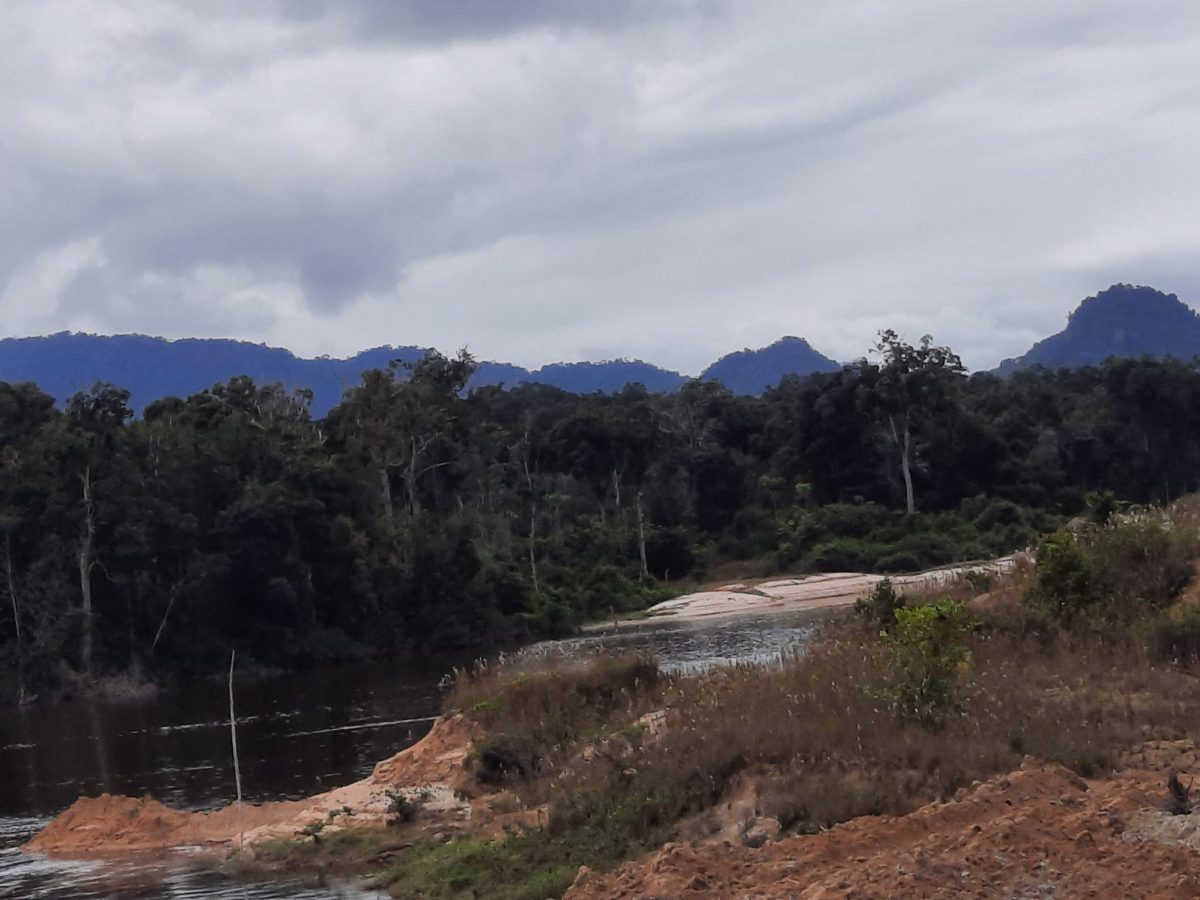Failing to prove its claim of illegal mining on its lands, a case filed by the Isseneru Village Council (IVC) in which it was seeking damages for trespass, was thrown out on Wednesday by a High Court judge.
It was the contention of the Region Seven Village Council that the Guyana Geology and Mines Com-mission (GGMC) enabled miners to conduct prospecting on its titled lands without first obtatining its permission.
The plaintiff council had argued, too that in breach of the Amerindian Act, the GGMC failed to conduct an environmental impact assessment (EIA).
In handing down his ruling on Wednesday, however, Justice Gino Persaud who presided over the trial said that the council had failed to prove its case on a balance of probabilities underscoring that its evidence was insufficient to prove its claim for damages for trespass and nuisance.
The judge pointed out that no expert evidence had been provided, noting that “the photographs tendered were of a poor quality and could not be relied upon to advance the plaintiff’s case in any way.”
According to a copy of the court order seen by this newspaper, the judge recalled from the evidence presented during the trial, that a witness for the village council had conceded under cross-examination that a dredge in question was on the river; which did not form part of their titled lands.
Justice Persaud noted also that the witness had agreed that the dredge did not work on their titled lands and that there was no damage to any of the Village’s structures.
“No evidence was provided of any damage to the river bed and bank as claimed,” Justice Persaud declared; while noting that the very witness had also conceded that a burial ground to which they referenced in their claim was being disturbed, was in fact located about 200 feet inland.
The Court found that no damage had been caused to the cemetery by the dredge for the brief period it operated in the river.
Recalling the testimony of a second witness for the village council, the judge said it had also been conceded by under cross-examination that the dredge caused no damage to any building or structure belonging to the Village.
This witness, the judge noted agreed at all material times that the dredge operated in the river and conceded that the Village Council did not own the river.
Failing to prove its case on the evidence, Justice Persaud then dismissed the claim; with each party to bear their own costs.
The plaintiffs were represented by attorney Jed Vasconcellos; while the GGMC was represented by attorney Patrice Henry.
The other defendant in the matter, Suresh Ramkissoon was represented by attorney Narendra Singh.
The Isseneru case was of particular interest in the wake of the standoff between the indigenous village of Chinese Landing on one hand and the government and miner, Wayne Vieira on the other.
Background
In its statement of claim (SoC), the plaintiffs, Isseneru complained that back in October of 2015, acting without its consent, the GGMC issued a permit to prospector Ramkissoon operate a dredge in their titled lands.
They argued that under the provisions of the Act, the consent of at least two-thirds of the Amerindian community is first needed before permission for mining activity can be granted to any miner.
Notwithstanding this, however, the plaintiffs said that the GGMC still went ahead, in breach of the Act, and issued permits for mining on their lands without entering into any agreement to so facilitate.
The Village Council had advanced also, that in accordance with the section of the Act the GGMC has an obligation to first satisfy itself, through environmental assessments, that the impact of mining activity on any Amerindian community would not be harmful.
This they said, was not done while adding that the provisions of the Act also oblige any miner who intends to mine within titled areas of Amerindian communities, to negotiate with that community.
It had been the claim of the village council that the size and scale of the dredge operated had “degraded the river bed and made the banks of the river unstable and has polluted the water” which residents of the community use for sanitary purposes.
The IVC said that it had suffered adverse impacts of mining from prospectors who had been granted permission to mine in the rivers and creeks which flow through their titled area.
The defendants they stressed, are not entitled to mine on their property without permission from the Toshao and that no such permission had been sought or granted and therefore mining could not be allowed on any river which passed through their titled area or lands contiguous to the plaintiff’s titled area.
In all the circumstances, the plaintiffs among other things, were seeking damages in excess of $400,000 for what they said was trespass on their land situated Isseneru, Middle Mazaruni, Essrquibo—for nuisance and for breach of the provisions of the Mining Act.
They were also hoping for costs, interest and any further order which the Court deemed just to grant.






